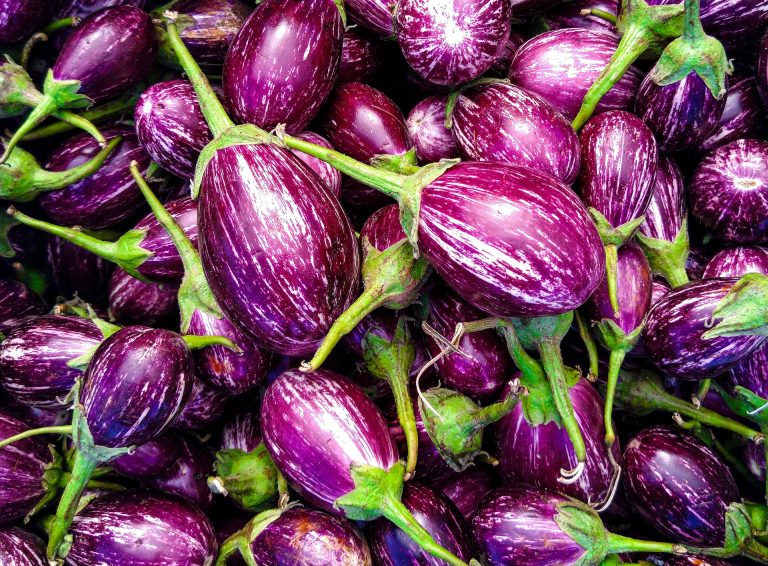August is the month when garden produce is at its peak. At a time when practically everything is in season, the problem is more often what to do with the surplus than what to eat. In this part of our series on seasonal eating, we will look at various methods for preserving the summer bounty to supplement the leaner months of winter.
There are a variety of preservation methods which can be used for many different foods; so, although we will describe a suggested way for each item listed here, there is little reason not to experiment with another method.
Frozen fruits

Berries, peaches, and other sweet fruits are well-suited to freezing. Not only does this maintain the fresh flavor and nutritional profile, it also offers amazing versatility for future use. Frozen fruit can be eaten as a snack, used in smoothies, or made into pies and preserves when you have the time and inclination to spend hours in the kitchen.
To freeze blueberries, blackberries, strawberries or grapes, rinse them in cool water and gently pat them dry between paper towels or between a clean, folded dish towel. Remove hulls from strawberries. Sturdy berries can be poured directly into freezer bags. Remove the air and seal tightly. Lay them flat in the freezer to avoid clumping.
Raspberries may not hold up to washing and patting, but at least look them over for insects, spoilage or debris. They can be frozen hard in a single layer on a cookie sheet before being bagged.
Success
You are now signed up for our newsletter
Success
Check your email to complete sign up
To freeze fruits like peaches, cantaloup, bananas, or even water melon, remove the parts you would not eat, and cut into bite size slices or chunks. Dipping in diluted lemon water helps preserve color in peaches, apples and pears. Lay the fruit flat onto a parchment-lined baking sheet and freeze until the fruit is hard. Then place the fruit in a freezer bag, remove the air and seal tightly.
Corn is another summer crop ideal for freezing. Although you can freeze whole cobs by first blanching and cooling, corn takes much less space when off the cob. The method is simple and suitable for any recipes where it will be cooked or baked. Simply cut the kernels from the cob and put them directly into dated freezer bags.
Fermented pickles
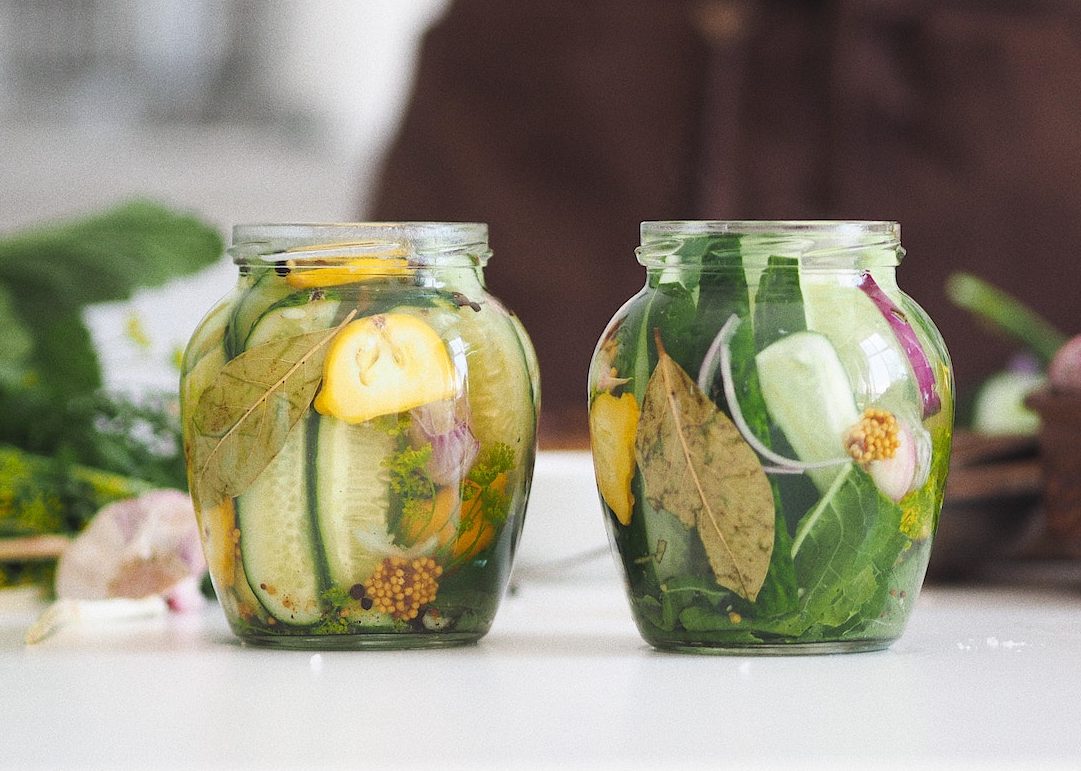
Fermented pickles enhance the nutritional value of seasonal produce by improving digestibility and introducing probiotics. Aside from the classic kosher dill pickled cucumber, many vegetables can be pickled. Beets, carrots, cauliflower, hot peppers, green beans and daikon radishes are all great candidates for pickling.
A basic pickle recipe calls for clean, fresh produce. Remove any bits that you wouldn’t normally eat (the tips of cucumbers, the ends of carrots, seeds from peppers) and cut into the desired size and shape.
In a clean, wide-mouth mason jar, add spices (mustard seed, garlic, sliced onion, dill seed, pepper, or your own pickling spice mixture and herbs), vegetable pieces (it is okay to mix and match), and a couple fresh grape leaves or dried bay leaves to preserve crispness. Cover in a cool bath of saline water (2 Tbsp kosher salt per 6 cups water).
The vegetables should be pressed into the jar so that they remain covered by water. This can be done with a glass weight, or you can stuff a grape leaf or cabbage leaf between the lid and the vegetables.
Use a fermentation lid that will allow for the release of air. Place in a relatively cool, clean location, out of direct sunlight. Try your pickles after around day four, and refrigerate after they are fermented to perfection.
Other preserved vegetables (like sauerkraut and kimchi) use salt but no added water to affect a ferment.
Dehydrating
Dehydrating is ideal for reducing the volume of things like zucchini and mushrooms, while keeping them handy for soups and casseroles through the winter. It is also the best method for preserving the potent flavor of aromatic herbs.
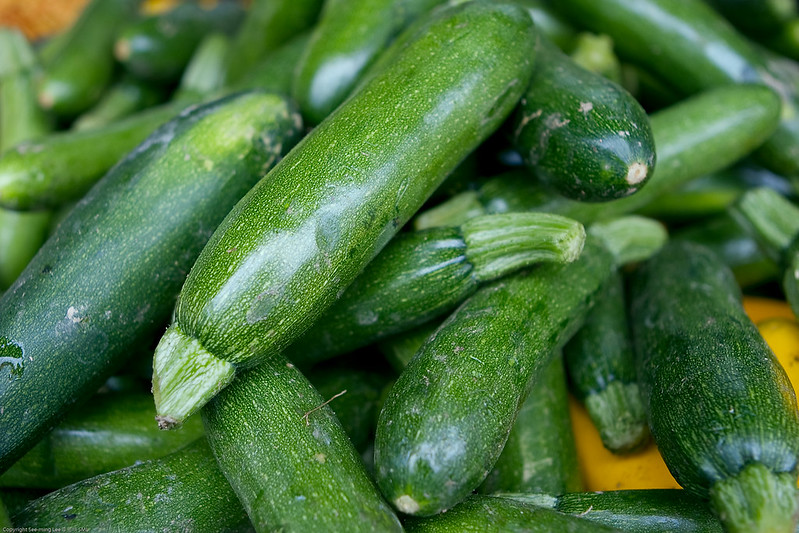
Dried zucchini and other summer squash can be rehydrated for use in casseroles, soups, and even as a pasta replacement for lasagna. Simply cut ¼ inch slices in the shape you wish to use. Place the slices in a single layer on a dehydrator tray and dehydrate at 125ºF (52ºC) for 6-12 hours. When the zucchini is dry and brittle it is done. Store in a labeled, air-tight container.
Mushrooms that will be used in soups are the best choice for dehydrating. Shiitake, crimini, white button mushrooms, chanterelles, morels and lion’s mane are all good options. Mushrooms are ideally cleaned with a brush, yet hollow or deeply gilled mushrooms – with the potential for hidden pests – should be soaked in a cool saline solution for 30 minutes to flush out bugs and slugs. Remove any unwanted bits of the mushroom and slice larger mushrooms to reduce drying time. Dehydrate at 125ºF (52ºC) for 4-8 hours until crisp. Allow to cool completely before storing in a clean, air-tight container – labeled with the date and contents.
Aromatic herbs can be air-dried by hanging them upside down or placing them on a towel in a well-ventilated, clean, dry area, out of direct sun; but this can take several days. If you have a dehydrator, it can be done in hours. Place clean, dry, sprigs of thyme, oregano, rosemary or sage in a single layer on a lined dehydrating tray. Dry on the lowest setting for two hours, or until the leaves are crispy. Store in a clean, air-tight container – labeled with the date and contents.
Roasted red peppers or eggplant
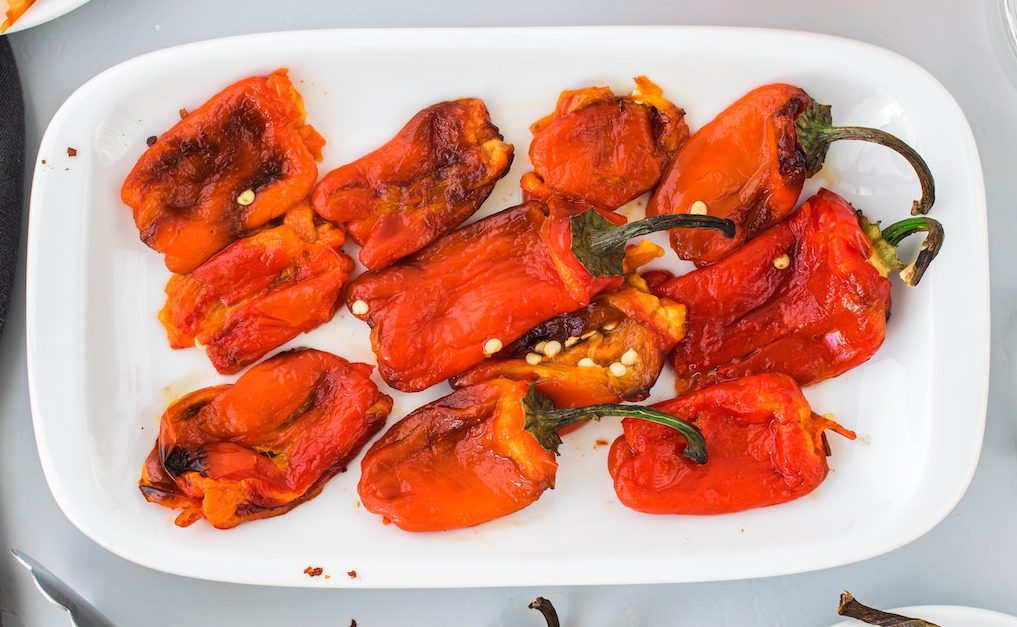
While peppers can be frozen like other fruits, roasting them in the oven not only reduces their volume, but also brings out their fruity sweetness in a magical way. Ripe bell peppers (red, orange or yellow) can be sliced and roasted in a hot (450ºF) oven, or flame roasted whole until evenly charred.
Directly place the roasted peppers in a covered bowl for ten minutes, and then remove the charred skin, which should slip off easily. If using whole peppers, slice and remove stems and seedcases now.
In a clean, wide-mouth, half-pint jars, layer roasted peppers and olive oil alternately, removing any air bubbles, leaving some room for expansion at the top. Cover the last layer in oil and place lids on tightly. Freeze any jars that won’t be used promptly.
Eggplants can be slow roasted after salting. Cut them lengthwise and salt the cut sides generously. Place them salted-side-down over paper towels and allow the moisture to be drawn for 30 minutes as the oven preheats to 275°F.
Place the wilted eggplants, cut side down, on a baking sheet with sliced garlic. Drizzle generously with olive oil and roast until soft (about 50 minutes).
Pack the roasted eggplant and oil into clean, half-pint jars with optional sprigs of basil or mint. Freeze any jars that won’t be used promptly.
Canning tomatoes
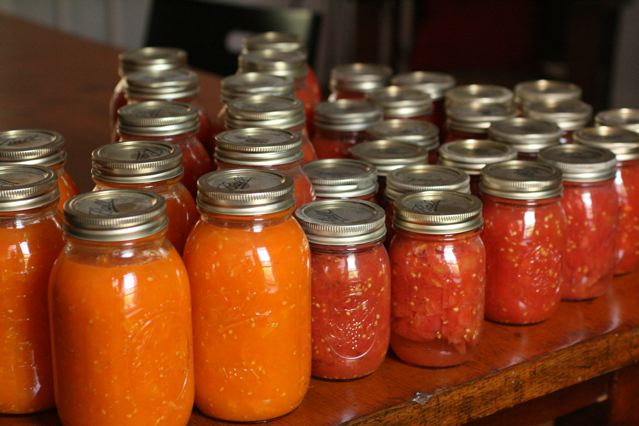
While freezing is the absolute simplest way to preserve tomatoes (just place clean, whole tomatoes in a freezer bag), not everyone has a freezer large enough to hold all the tomatoes they might get in a season. The next best method for versatility is canning whole or half tomatoes. They can then be used to make sauce, in soups and stews, on sandwiches, or added anywhere you’d like a touch of tomato.
Canning with a water bath doesn’t call for any special equipment, but it does take longer than pressure canning. Either way, the canning process is somewhat involved, but this is the basic idea:
Clean, ripe tomatoes are pared, blanched, and dipped in an ice bath to remove the skin. Large tomatoes should be cut, while taking care to catch any juice. The whole or halved tomatoes and juice are further cooked for five minutes.
Sound, freshly-sterilized mason jars are filled with the cooked tomatoes and enough juice to cover them. Leave a half inch headroom, and add 2 Tbsp lemon juice or ½ tsp citric acid to each quart jar.
If you don’t have a canning funnel, be sure to wipe the rims clean before closing the jars with new canning lids.
Quart jars should be processed in a hot water bath for 45 minutes (in a rack and covered with one inch water). Pressure canning calls for a significantly shorter processing time, and high altitudes call for somewhat longer processing.
Elderberry syrup
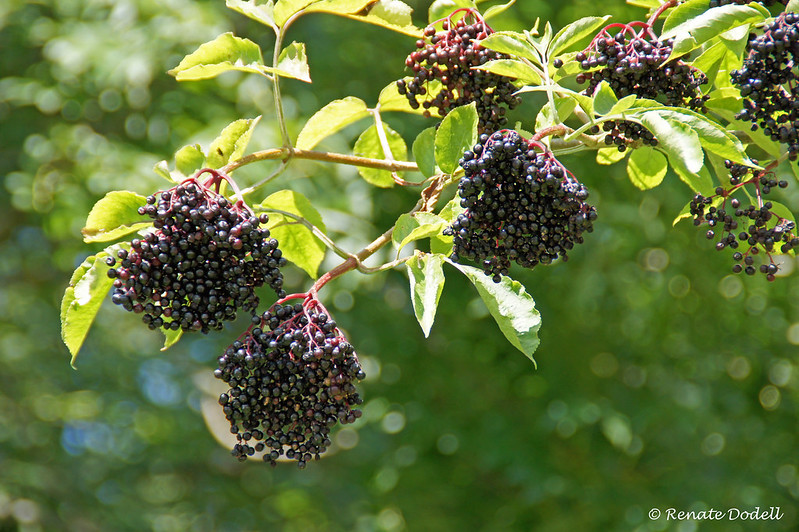
Finally, elderberries can be prepared to preserve your own health. Since they are really mostly seed, elderberry jam is uncommonly crunchy and so is a pie. Probably the most common traditional use of elderberries is to make a velvety medicinal syrup for fighting colds and boosting immunity through the winter.
Yet since each tiny berry is attached to a large network of stems, picking them by hand is a nightmare of tedium. To save yourself a lot of trouble, freeze whole clusters on a cookie sheet until hard. After this, the berries practically fall off with a light swipe of the hand.
Place the berries in a medium saucepan, and cover with water. Add whole cloves, ginger slices, and a cinnamon stick or two. Bring the mixture to a boil, reduce heat, and simmer for 30 minutes. Mash the berries, then strain with a fine mesh.
Allow to cool for 30 minutes, then stir in honey to taste until dissolved. Pour into clean jars, cover, and store in the fridge.
Enjoy the fruit of your efforts with a wholesome and healthy winter.



